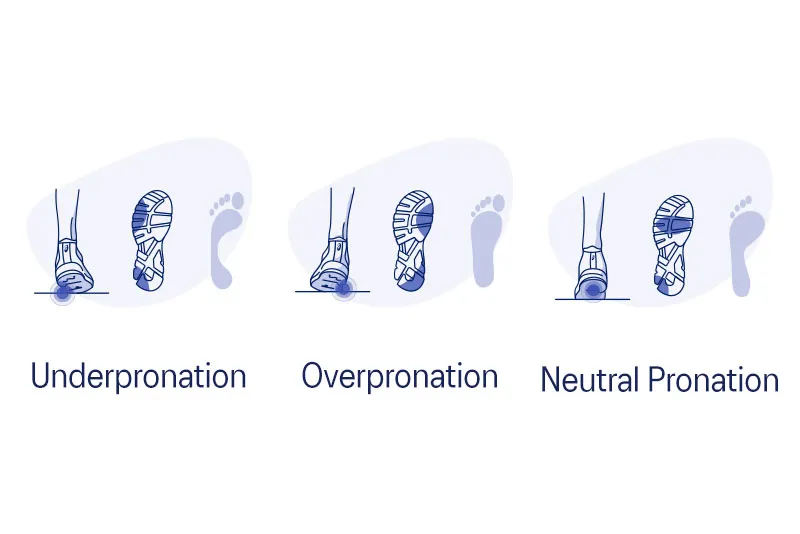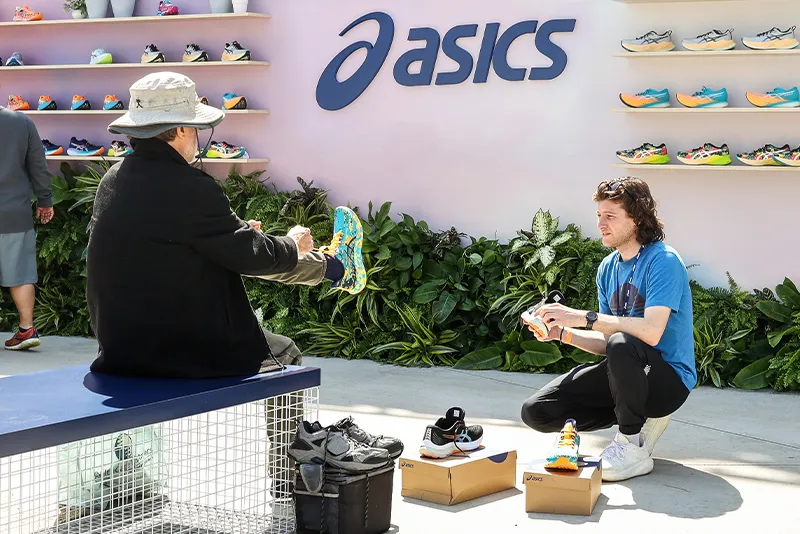
How Do Running Shoes Wear Over Time
October 23, 2023
It was love at first step. You took your spotless new ASICS running shoes out of the box, laced up, and never looked back. But now, several months and a few mud puddles later, they're looking a bit more... broken in. Is it normal wear and tear? Or cause for concern? Read on to learn how your shoes are likely to break down over time — and when you might need to replace them.
How Long Do Running Shoes Last?
The lifespan of your shoes depends on several factors, like your running style, how often you run, and the terrain. In general, you can expect to replace your shoes every 300-500 miles. This applies to shoes across the ASICS lineup — a shoe with more cushioning can offer a softer ride, but that doesn’t mean it will outlast a more lightweight style.
What Does ‘Normal Wear and Tear’ Look Like?
The most obvious place for your shoes to wear down is the bottom. Over time, the rubber on the soles will degrade due to friction against the ground. Running on harder surfaces, like a treadmill or pavement, will cause faster wear than running on dirt or a track.
It’s important to note that shoes don’t always wear evenly. For example, runners who have pronation — meaning their feet roll inward excessively — might see more wear on the inside of their shoes than the edges. Asymmetrical wear patterns can help identify how you run, and where you may need extra support.

Ultimately, there’s no once-size-fits-all when it comes to wear and tear. Someone who runs long distances on sidewalks will go through shoes faster than a casual trail runner. Knowing your running style and training habits goes a long way in predicting your shoe’s lifespan!
Signs of an Improper Fit
As your shoes reach the 300-500 mile mark, it’s normal to see minor imperfections or tears in the upper fabric. However, certain types of wear can signal that your shoes don’t fit properly.
- Holes in the toe box
Despite the name, your shoe’s toe box isn’t supposed to rub against your toes. If holes appear in the toe box fabric, it could mean that your shoes are too snug, too large, or even that your toenails are too long.
- Worn fabric in the heel
If your shoes have a loose fit, your foot will slip backward with each step. This added friction can cause the fabric inside the shoe’s heel to wear down over time.

- As a rough guide, there should be between half and a full thumb's width of space between your toes and the end of your running shoes, and there shouldn’t be extra space between your ankle and the shoe’s heel. If you’re having trouble finding the right fit, you can visit an ASICS store for in-person guidance!
When To Replace Your Shoes
It’s hard to say goodbye to your go-to shoes, but if you see or feel these signs of wear, it could be time to look for replacements:
- Rubber on the sole that’s so worn down, you can see the midsole foam underneath
- One shoe’s sole is more worn down than the other shoe
- A midsole that feels too soft, has visible creases, or collapses easily
- Increased muscle soreness after running
Caring For Your Shoes
All running shoes wear out eventually, but following these tips can help you get the most out of your favorite pair.

- Keep a mileage log.
Tracking your mileage through a fitness app like Runkeeper™ makes it easy to know when you’re nearing the 300-500 mile mark.
- Only use your running shoes for running.
We get it — they look great, they feel amazing, why wouldn’t you want to wear them everywhere? The truth is that every mile counts, so it’s best to have another pair of kicks for dog walks, grocery runs, etc.
- Inspect your shoes monthly.
Giving your shoes a visual check-up every few weeks can help you catch signs of excessive wear early.
- Follow the care instructions.
Your washing machine isn’t the place to clean your running shoes (even on the delicate cycle). Always spot-clean your shoes according to the care instructions to prevent damage and color bleeding. For more details, check out our how-to guide for cleaning running shoes.